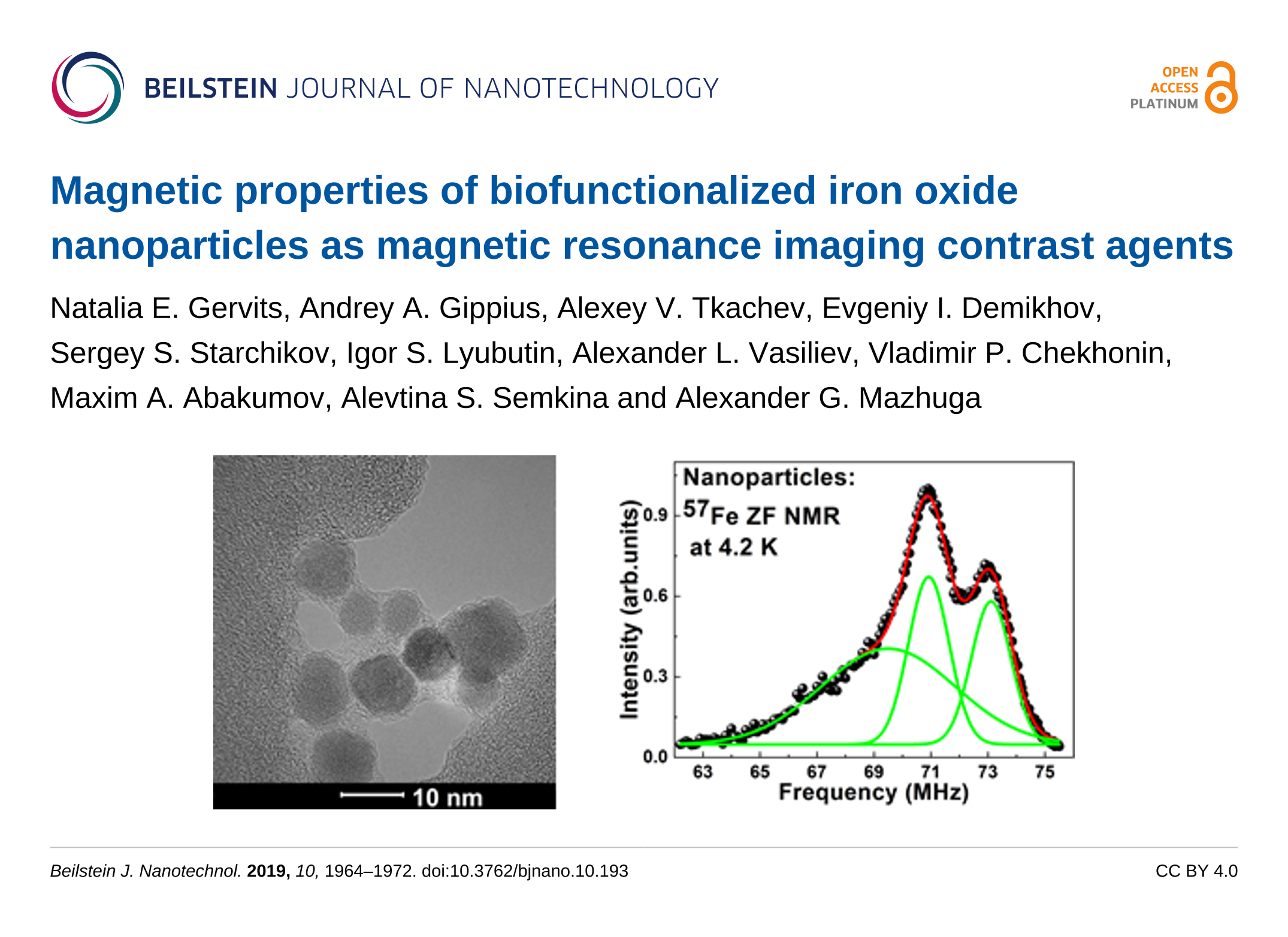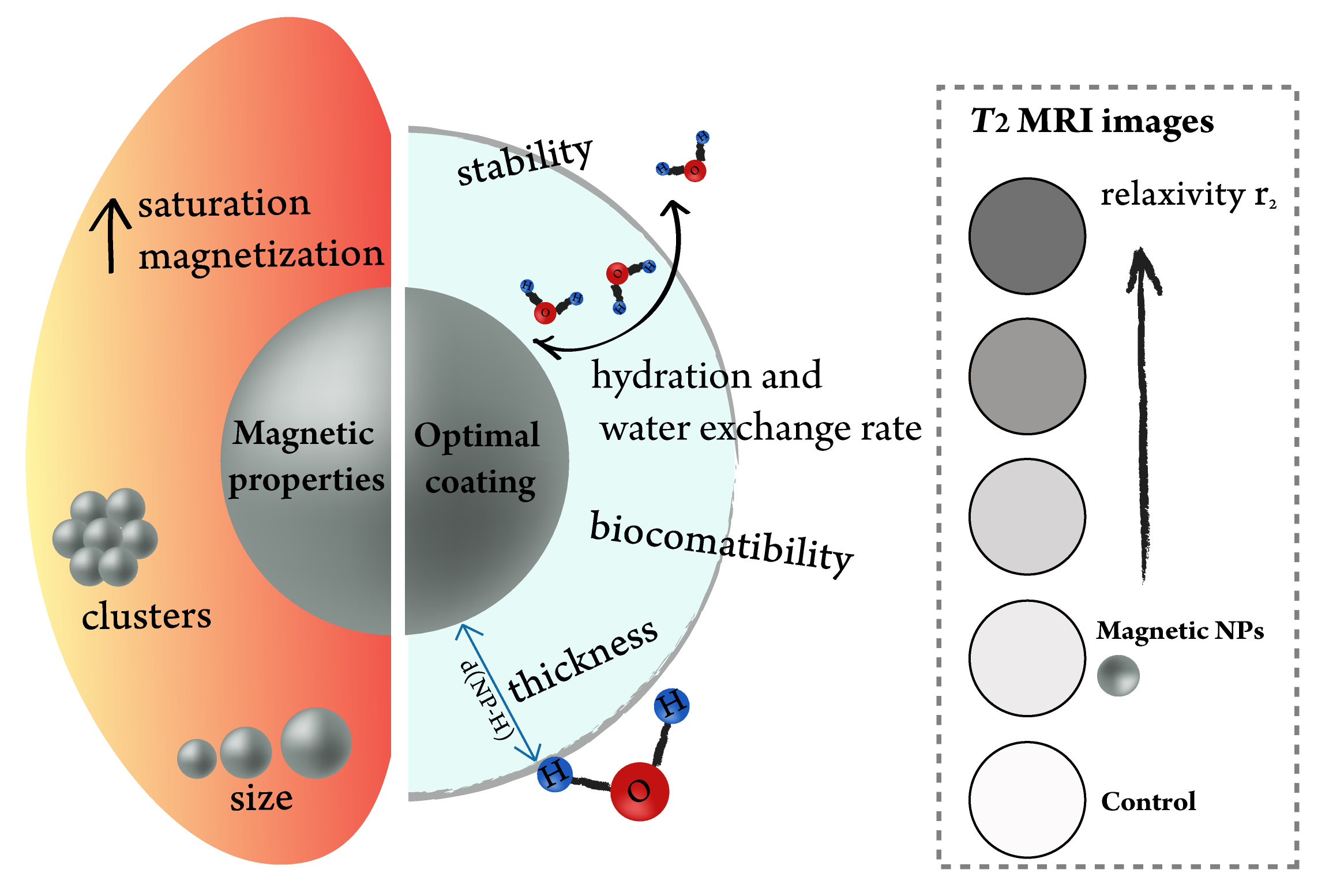
High-spatial-resolution sequences in separate breath holds can complete imaging and longer imaging time can be used if needed, for example to study bile leak or contrast agent washout. The purpose of this review is to provide a brief overview of the history and synthesis of iron oxide nanoparticles, their current applications in clinical imaging and their prospective clinical applications. Hepatobiliary-specific MRI contrast agents prolong the apparent 'hepatobiliary phase', therefore there is no precise time requirement for imaging in this phase. While there are some limitations to the use of iron oxide nanoparticles, including allergies to parenteral iron and iron storage disorders, the practicable applications for these agents will continue to expand. Current research efforts are aimed at harnessing the characteristics of these nanoparticles to advance magnetic resonance imaging techniques and explore new therapeutic potentials. Iron-oxide-based contrast agents for magnetic resonance imaging (MRI) had been clinically approved in the United States and Europe, yet most of these nanoparticle products were discontinued owing. These properties have led to improved techniques for imaging a variety of vascular, oncologic and inflammatory conditions with iron oxide nanoparticles.

Ultra-small iron oxide nanoparticles have unique pharmacokinetics, metabolic and imaging properties. In the mid-1990s several iron-based MR contrast agents were designed to undergo uptake into the phagocytic cells of the liver, primarily macrophages. Director Cheon said, “SAIO is a next-generation contrast agent that satisfies both high resolution and safety at the same time” and professor Choi said, “SAIO is expected to play a vital role in increasing the accuracy of the diagnosis of cerebro-cardiovascular diseases such as stroke, myocardial infarction, angina, and dementia.While the use of iron oxide nanoparticles as magnetic resonance contrast agents for clinical imaging is established, they are more recently experiencing renewed interest as alternatives to gadolinium-based contrast agents. It was also found that SAIO was stable without aggregation nor iron leaching for up to a year. SAIO has an excellent renal clearance profile without accumulation in liver or spleen. In addition to having high resolution, excretion of the contrasting agent through urine is especially important to avoid its accumulation within the body, which can cause various side effects. These excellent properties of the SAIO allowed the researchers to observe the heart blood vessels, which are hardly visible with current MRI contrast agents. In addition, to excellent resolution, the enhancement lasts substantially longer (>10 min) in comparison to Dotarem (< 2 min), which gives the radiologist an ample amount of time to carry out the imaging procedures.

It has achieved a 3D brain vascular mapping that can clearly identify brain microvessels as thin as a hair (100 microns) in animal experiments. SAIO is one of the highest resolution imaging agents, which is 10 times more precise than the image generated using current contrast agents. Superparamagnetic iron oxide nanoparticles (Fe3O4 NPs) are the focus of extensive attention in areas such as catalysis 1, as well as biomedical applications. The researchers compared the contrast performance, retention, and renal clearance profile of the SAIO against Dotarem (a gadolinium-based agent) and iron oxide nanoparticles. The hybrid nature of the SAIOs gives them both excellent biocompatibility and imaging performance. This core is then coated with an iron oxide surface to give it paramagnetic properties at room temperature. SAIO is a special nanoparticle that consist of a polysaccharide core made primarily with dextran cross-linked with other molecules. Image source: Institute for Basic Science

The scientists published their insights in the journal Nature Biomedical Engineering. This allows it to circulate across blood vessels in the body. The particle is 5 nanometers in size, which is about 1,500 times smaller than the microvascular diameter. The researchers developed a nanoparticle-based MRI contrast agent, called SAIO (Supramolecular Amorphous-like Iron Oxide). A collaborative research team led by Professor Jinwoo Cheon, the director of the Center for Nanomedicine (CNM), Institute for Basic Science (IBS) at Yonsei University, Seoul, South Korea, and Professor Byoung Wook Choi from Yonsei University College of Medicine developed a high-performance MRI contrast agent for 3D vascular mapping. There have been some attempts to use paramagnetic iron-based nanoparticles as contrasting agents, but their renal clearance profile must be improved to prevent undesirable accumulation in the liver and other organs. Commonly used gadolinium-based contrast agents must be administered in chelated forms due to the gadolinium ions' high toxicity and pose health risks of nephrogenic systemic fibrosis for patients with poor kidney functions.


 0 kommentar(er)
0 kommentar(er)
